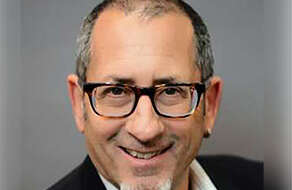In 2022’s CX focus, digital also means hands-on
Technology will only enable what thinking people can envision.
January brings a lot of focus on customer service. People are dealing with online and physical stores for returns or replacements. They’re fighting with airlines over the holiday cancellations. They’re finding car dealers slapping on fat premiums.
Thanks to a Biden administration executive order from last last month, customer experience will occupy a lot of effort by federal agencies this year. The order names 35 agencies or bureaus as designated high-impact service providers. You know who you are.
As a federal market initiative, improving CX will require investments to update technology. Some projects just need to get pulled across the line. The long-running State Department effort to offer online passport renewal comes to mind. More broadly, the order seeks to establish the nirvana of “no wrong door” — the idea that citizens can find what they need regardless of which federal website they start with.
The Biden EO builds on a long tradition of presidential initiatives on service to the citizen. But that doesn’t make it redundant. To the contrary, best practices are moving targets. Technology changes, always expanding the possibilities of what you can do. Somehow, artificial intelligence will infuse itself into the next generation of federal services, as it has into so many of the commercial applications.
I add this for 2022: Customer experience success will start in the minds of program managers, IT people — really anyone in the agency, if you listen to them — and only then will technology translate the idea into reality. And this: Great CX isn’t only about technology. Sometimes it takes the personal touch.
Sounds obvious. But in an age where people email, text or Slack others who are sitting 10 feet away, it’s easy to forget.
Two recent experiences I’ve had just in the past couple of weeks illustrate the range of possibilities.
On the tech side, I acquired a new grand piano (not a baby grand). New to me, that is. A brand new one of the same make and model costs more than a loaded Lexus. I had a 1969 Pontiac. Now I have a 1969 piano. Anyway, my tuner-tech is leaning on me to treat the room in which the piano stands. I need to do something called bass trapping.
I could hire an acoustical engineer and spend a fortune. But you can now send room dimensions to more than one website, which will analyze the room for you with some algorithm, and come back with recommendations for where to place the bass traps. Digital self service on the acoustic front.
On the piano I have placed a small, framed photograph. It depicts my mother at the age of three. I needed a new backing for the frame. The little tilt-out easel had broken off the old one. I found you can buy replacement frame backs all over — from Amazon and a thousand other places — but not in the size I needed. After a phone conversation with a person at a California frame manufacturer, within a day my custom-cut easel-back was on its way. It arrived and fit perfectly.
To some degree, the Biden order acknowledges the need for phone support. For instance, the infinity of tax possibilities lies beyond even algorithmic capabilities. Or they might need insight from, or expediting by, a caring federal employee. The order calls for scheduled callbacks from the IRS, so people don’t have to wait forever on hold. That’s a great example of the human and the machine augmenting one another.
Final thought: How about opening those Social Security offices back up. Social Security posted a cryptic message as late as Dec. 22. If Veterans Affairs can see its constituents in person, so can the Social Security Administration. I bet the front line SSA employees think so too.
Copyright © 2024 Federal News Network. All rights reserved. This website is not intended for users located within the European Economic Area.
Tom Temin is host of the Federal Drive and has been providing insight on federal technology and management issues for more than 30 years.
Follow @tteminWFED







